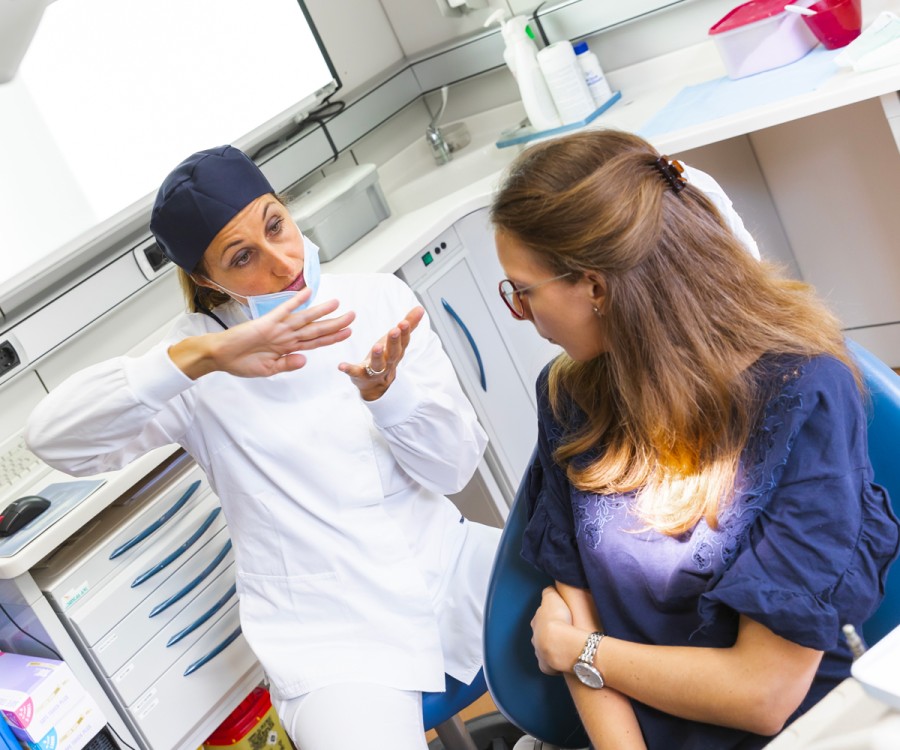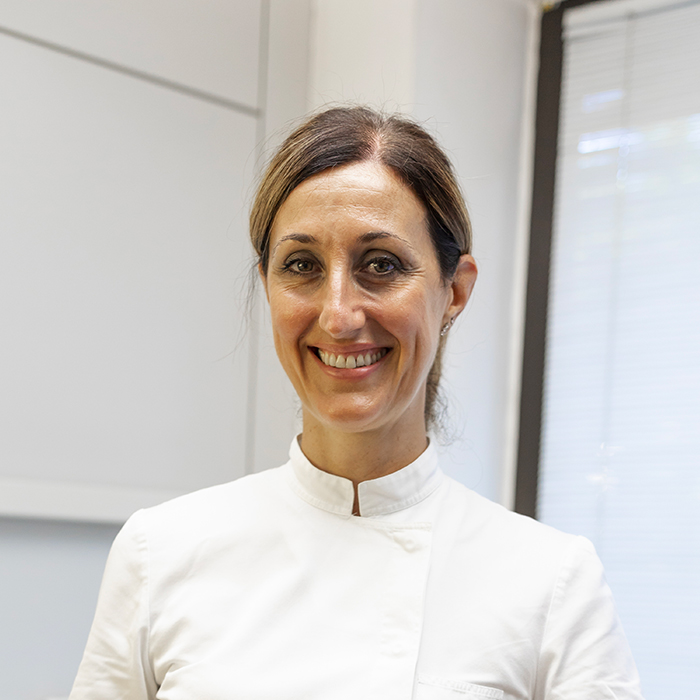Crowded or crooked teeth
Studio Fonzar: Dentists in Udine
If you have any of the following:
– a lack of space for your teeth to grow into
– milk teeth that don’t fall out, while the permanent teeth are growing crooked
– teeth that fail to appear even though your milk teeth fell out some time ago
– upper teeth that project out compared to the lower teeth (buck teeth), stopping the lips from closing properly and failing to protect your teeth from traumas and thermal shock
– lower teeth too far forward compared to upper teeth (underbite)
– upper teeth that do not close in line with the lower teeth (open bite)
– upper teeth that close too far over the lower teeth (deep bite)
– significantly crooked or crowded teeth
– breathing primarily through the mouth including snoring and occasionally even sleep apnea
– speech difficulties
if you have a problem with malpositioned teeth, we recommend you book an immediate appointment with an orthodontist for treatment.

Who treats crowded or crooked teeth in our studio?
How we treat crowded or crooked teeth?
During the initial visit, the orthodontist will examine the patient’s face and oral cavity to see whether all the teeth are in place, taking into account growth and age. S/he will then outline any potential problems and how to treat them.
In order to provide a diagnosis, define the objectives and treatment program with the respective quote, an additional visit will be necessary for photographs, radiography, medical records and taking a dental impression. Only after having carried out a study of the models and the radiography will the dentist determine the recommended braces and explain the method and timetable of the treatment.
In addition to the range of removable braces and traditional fixed metal or clear braces, there is also an option, especially with adults, for invisible tools such as lingual braces and removable clear aligners.
What is orthodontics?
Orthodontics deals with the growth of the facial bones, mastication and the position of the teeth, i.e. how the upper and lower teeth set against each other. Orthodontic treatment aims to ensure a beautiful smile as part of balanced and harmonious features and effective mastication, providing both cosmetic and functional benefits. Straight teeth are attractive to the eye and easier to clean, and proper mastication contributes to preserving not only the teeth but also the joints and the neuromuscular system of the face and the adjacent structures.
For growing children, orthodontics is able to modify and exploit the growth of the bone to correct problems such as protruding teeth, over or under-developed chin and high-arched palate.
In adults, where the bones are already fully-formed, interventions primarily consist of moving the teeth when it appears necessary.
What is the recommended age for a first orthodontics appointment?
The first visit to an orthodontist is recommended at the age of six years old, when milk teeth begin to fall out. Even before this age, however, a checkup will be able to identify potential bone and dental issues resulting from potential bad habits such as thumb-sucking, use of a dummy, the positioning of the tongue and oral breathing. Early-age treatment ensures early identification and often prevention of potential dental and skeletal issues which may necessitate longer and more complex interventions later on, such as teeth remaining fused to the bone or a high-arched palate.
What is an orthodontist?
An orthodontist is a dentist who, having received a degree in dentistry, spent a further three years at university dedicated solely to this field, obtaining the title of “Specialist in Orthodontics”.
Why is it important for the treatment to be carried out by a specialist in orthodontics?
Orthodontic treatment is not without undesirable side-effects such as reduction (resorption) of the roots, a greying of the teeth following the death of the nerve, loss of bone and receding gums. A specialist in orthodontics is able to check and minimise these not uncommon occurrences. More important yet, s/he is able to establish accurate and realistic treatment objectives based on the dental and skeletal malocclusion and the age of the patient. Together with the use of very minimal force, latest generation, low-friction etching and limited biomechanics (the use of force to move the teeth), this enables the desired functional and cosmetic outcome at minimum risk to the health of the teeth and their support structures, the bones and gums.
Further information
– Sorridibene
– Invisalign
– Orthodontics / pag. 265-311
What we treat?
Discover our treatments.
We effectively treat periodontal disease, caries and all other diseases of the oral cavity.
Identify your problem.













